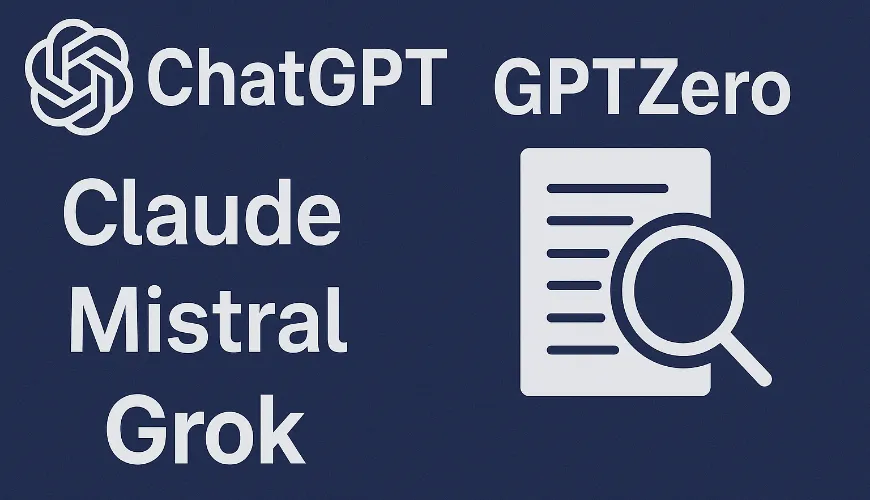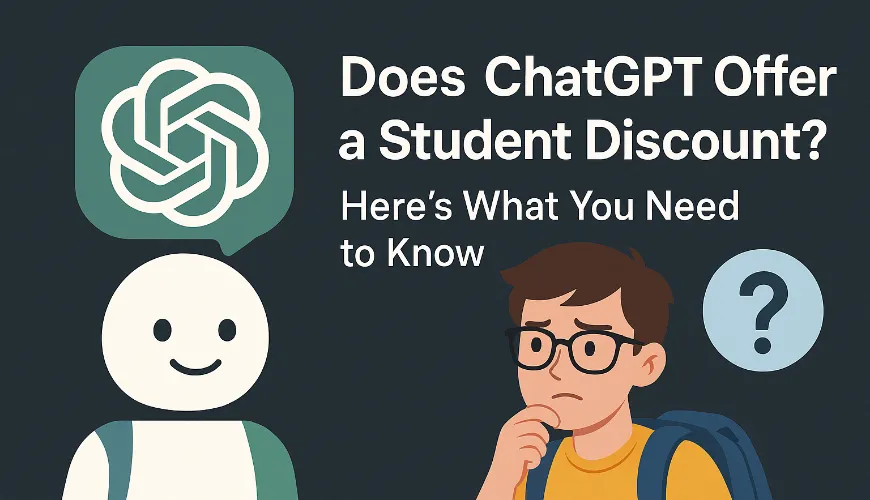Artificial intelligence has taken the digital world by storm. Whether you're writing a report, generating marketing copy, or even composing a heartfelt poem, tools like ChatGPT, Claude, Mistral, and Grok—all available on platforms like Claila—make it insanely easy to create high-quality content in seconds.
But with such powerful tools at our fingertips, a big question lingers: how can we differentiate human writing from AI-generated text?
Enter GPTZero, often referred to as ZeroGPT, Chat GPT Zero, or even Zero Chat GPT. This tool claims to detect whether a piece of text was written by a human or generated by an AI model. But how accurate is it? Is it reliable enough for educators, editors, or companies that need to verify content authenticity?
Let's unpack everything you need to know about GPTZero, how it works, and whether you should rely on it—or explore better alternatives for your writing needs.
What is GPTZero?
In simple terms, GPTZero is an AI detection tool that scans text and tries to figure out if it was created by a human or by an AI system like ChatGPT. It's especially popular among teachers and employers who want to ensure that essays or reports are genuinely written by the person submitting them.
Developed by Edward Tian, a computer science student at Princeton University, GPTZero exploded in popularity when it launched in early 2023. It was built out of concern that students might misuse AI to complete assignments. Since then, it's gained significant attention from academic institutions and media alike.
How Does GPTZero Work?
GPTZero analyzes two key markers in any given content:
- Perplexity – This checks how "surprised" the model is when reading a sentence. Lower perplexity often means the content is predictable, which can be a sign that AI wrote it.
- Burstiness – This looks at the variation in sentence lengths and complexity. Humans tend to write with more burstiness, while AI usually sticks to a more uniform structure.
By combining these two metrics, GPTZero gives a verdict: human-written, AI-generated, or mixed content.
What makes GPTZero different from some other AI detectors is that it doesn't rely solely on keywords or grammar. Instead, it tries to understand the style and structure of the writing. That said, it's not a perfect science.
Is GPTZero Accurate?
This is where things get complicated.
While GPTZero is one of the better-known AI detectors, its reliability is far from 100%. According to a detailed review by All About AI, GPTZero correctly identifies AI-generated text only around 70–80% of the time. Its accuracy with human-written content is even lower, sometimes misclassifying genuine work as AI-generated.
That means there's a decent chance that someone's authentic writing could be flagged as artificial. And in high-stakes scenarios, such as academic grading or professional evaluations, that's a huge risk.
Here's a quick breakdown of its performance:
- AI detection accuracy – Around 77%
- False positives on human writing – As high as 40%
- Mixed-content scenarios – Often confusing for the tool
It's worth noting that no AI detector is foolproof. As language models evolve and become more sophisticated, they create text that closely mirrors human writing. This makes it harder for GPTZero and similar tools to keep up.
Real-Life Example: When GPTZero Fails
Imagine you're a high school student who worked hard on an essay about climate change. You submit it, only to be accused of using ChatGPT because GPTZero flagged your work as AI-generated. You know you didn't cheat, but how do you prove it?
Unfortunately, these false positives are becoming more common. Teachers and managers who rely solely on AI detectors can misjudge creative or well-structured human writing as "too perfect,” assuming it must be AI-assisted.
This doesn't mean GPTZero is completely useless, but it should be used cautiously and never as the only method of evaluation.
Alternatives to GPTZero
If you're trying to get a better handle on content authenticity, there are actually a few pretty reliable tools out there that can help. Whether you're working in publishing, marketing, or academia, these options can give you a clearer sense of whether something's likely to be AI-generated.
One standout is Originality.ai, a favorite among web publishers for its consistent output when flagging AI-written material. It's designed with digital content in mind, so it's a solid pick if you're running blogs, websites, or any kind of online media.
Another one to look at is the tool from Writer.com. The Writer.com AI Content Detector leans more toward professional settings like marketing teams or freelance content creators. It's built to support people who are creating a high volume of copy and want a quick check for authenticity.
And of course, there's Turnitin. Most people recognize it from school or university, where it's been the go-to for plagiarism detection. Now, it's expanded and includes AI writing detection features as well—a helpful upgrade for educators working to maintain academic integrity.
That said, here's a crucial heads-up: don't assume these tools are perfect. Even the best ones aren't foolproof. They're meant to be used as helpful indicators, not final verdicts. Think of them more like direction signs rather than stop signs. Always bring in your own judgment and context before making any big calls based solely on what a detector says.
Why AI Detectors Struggle
The truth is, AI-generated writing has become incredibly human-like. Models like ChatGPT, Claude, Mistral, and Grok—available on Claila—are trained on massive datasets and can replicate various writing styles, tones, and formats with ease.
The line between human and machine-created content is getting blurrier by the day. Some AI-written pieces are so nuanced and rich that even professional editors can't tell the difference.
Plus, if someone edits AI text even slightly—adds a few human touches or rewrites a paragraph—the detectors often fail to recognize it as AI-generated. On the flip side, if a human writes a very formulaic or grammatically perfect piece (like many students do), it may wrongly get flagged.
The Role of Human Judgment
If you're a teacher, journalist, or business owner reviewing content, trust your human instincts first. Ask questions:
- Does the tone match the writer's usual style?
- Are there signs of original thinking or personal experience?
- Is the structure too perfect or formulaic?
AI detection tools can assist, but human judgment is still the most reliable way to evaluate authenticity.
Creating Perfect Texts the Right Way
Rather than worrying about whether some tool will flag your work, why not focus on creating top-quality content from the get-go?
Platforms like Claila offer access to a suite of advanced AI tools—like ChatGPT, Claude, Mistral, and Grok—that can help you brainstorm, draft, and refine your writing. Whether you're a student trying to polish an essay or a marketer crafting the perfect email, Claila gives you the flexibility to write better—and smarter.
And if you're worried about originality, you can always tweak and personalize the content. With a little editing, you can create something that's not only helpful and well-written but also uniquely yours.
A Balanced Approach to AI Writing and Detection
It's easy to get caught up in the debate about AI vs. human writing. But maybe the better question is: how can we use AI ethically and creatively without crossing the line?
AI writing tools are here to stay—and they're not inherently bad. In fact, when used responsibly, they can save time, boost creativity, and help people communicate more effectively.
At the same time, we need to be cautious about tools like GPTZero that claim to detect AI content. While they serve a purpose, relying on them too heavily can backfire, especially when people are wrongly accused or their work is unfairly evaluated.
The best path forward? Use AI tools like Claila to create original, meaningful content—then use your judgment, not just algorithms, to assess authenticity.



